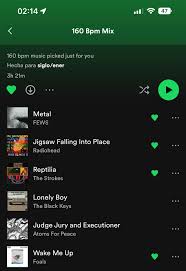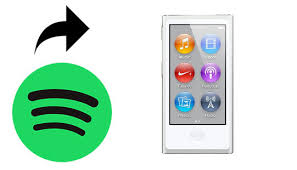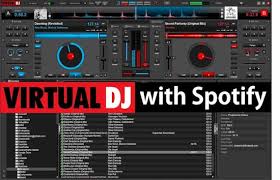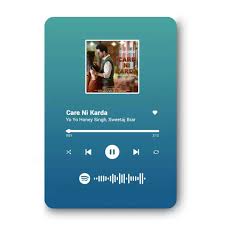For DJs, producers, and even casual listeners, the tempo of a song—measured in beats per minute (BPM)—can define the mood and flow of a set. Spotify, with its immense library of tracks, offers countless playlists for every genre, but it does not provide a native feature to sort songs by BPM. Understanding how to sort Spotify playlists by BPM can transform your music workflow, whether you are creating seamless DJ mixes or simply curating a workout playlist.
In this guide, we explore practical methods, tools, and strategies for organizing your Spotify playlists by BPM, ensuring efficiency, creativity, and superior performance.

Why Sorting by BPM Matters
Sorting songs by BPM is essential for several reasons:
Seamless DJ sets: Mixing tracks with similar BPMs avoids abrupt transitions and ensures consistent energy.
Workout playlists: BPM can determine pacing for running, cycling, or gym routines. High BPM tracks energize, while slower BPM songs help cool down.
Mood-based curation: BPM often correlates with emotional intensity; faster songs feel upbeat, slower songs feel reflective.
Music production: Producers often use BPM sorting to identify tracks that match their project tempo or create mashups.
Without proper sorting, playlists can feel chaotic, making it harder to find the right song at the right moment.
Understanding Spotify’s Limitations
Spotify’s native app does not display BPM for individual tracks, nor does it allow sorting playlists by tempo. While you can sort by title, artist, album, or recently added, BPM-based organization requires external tools or workarounds.
This limitation is due to Spotify prioritizing music streaming and discovery over detailed musical metadata, which is why third-party apps and DJ software play a crucial role.
Tools and Methods to Sort Spotify Playlists by BPM
1. Use DJ Software Integration
Professional DJ software like Serato DJ, Rekordbox, and Traktor can read Spotify-exported tracks (via converters or licensed integrations). These platforms automatically detect BPM and key for each track.
Step-by-step approach:
Export your Spotify playlist using a Spotify playlist exporter like Soundiiz or TuneMyMusic.
Convert Spotify tracks to MP3 or WAV using reliable converters like MusicFab Spotify Converter or AudFree Spotify Music Converter.
Import the tracks into your DJ software.
Use the BPM column in the software to sort tracks from slowest to fastest or vice versa.
This method is ideal for DJs who plan to mix tracks live and want precise tempo control.
2. Third-Party Web Apps for Spotify BPM Sorting
Several web apps analyze Spotify playlists and provide BPM metadata:
Sort Your Music (sortyourmusic.playlistmachinery.com): Free online tool that connects to Spotify and allows sorting by BPM, key, popularity, or duration.
Tunebat: Offers Spotify playlist analysis, including BPM and key detection.
Song BPM Database: Useful for verifying individual track BPM before adding it to a playlist.
Steps to use Sort Your Music:
Log in with your Spotify account.
Select the playlist you want to organize.
Click on the BPM column to sort tracks in ascending or descending order.
Save the new playlist directly to Spotify or export it for DJ software.
This method is efficient for casual users and DJs who want quick playlist organization without installing software.
3. Excel or Google Sheets Approach
For detailed playlist management, exporting Spotify playlists to a spreadsheet allows manual BPM tagging and sorting:
Export your playlist to CSV using Exportify or Spotify Playlist Exporter.
Add a BPM column manually using Tunebat, Song BPM, or Mixed In Key to check each track’s tempo.
Sort the spreadsheet by BPM.
Optionally, recreate a playlist in Spotify using the ordered track list.
This method is time-consuming but provides maximum customization and record-keeping, especially useful for large playlists exceeding hundreds of tracks.
4. Mobile Workarounds
While desktop solutions offer full control, mobile users can:
Use Sort Your Music mobile browser to access Spotify playlists and sort by BPM.
Use DJ companion apps like djay by Algoriddim, which analyze tracks and display BPM for sorting.
Combine Spotify playlist export + cloud spreadsheet to maintain BPM metadata for on-the-go access.
These approaches allow DJs and fitness enthusiasts to manage playlists from anywhere without needing a full desktop setup.
Best Practices for BPM-Based Playlist Management
Use consistent units: Stick to standard BPM values for all tracks; avoid approximations to ensure smooth DJ mixing.
Organize by ranges: For long playlists, group tracks in ranges (e.g., 60–80 BPM, 80–100 BPM, 100–120 BPM) to simplify navigation.
Maintain playlists in tiers: Separate high-energy tracks from slower-tempo songs to match set moods or workout segments.
Backup playlists: Always maintain a copy of your original playlist before reordering by BPM.
Update regularly: Spotify frequently updates catalogs; periodically check for new songs and assign BPM metadata.
Benefits of Sorting Spotify Playlists by BPM
Enhanced DJ performance: Create fluid sets with tempo-compatible tracks.
Efficient music discovery: Quickly identify songs suitable for specific energy levels or moods.
Improved listener experience: Workout playlists, party playlists, or chill sessions flow better when organized by tempo.
Time-saving preparation: DJs and producers spend less time searching for tracks that match the desired BPM.
Conclusion
Sorting Spotify playlists by BPM unlocks a new level of control and creativity for DJs, producers, and music lovers. While Spotify does not provide this feature natively, a combination of DJ software, web apps, and spreadsheet tools enables precise organization. Whether you are preparing for a live set, crafting the perfect workout playlist, or curating a mood-based listening experience, sorting by BPM enhances flow, energy, and overall enjoyment.
By understanding your playlist’s tempo dynamics and applying these tools, you can turn any Spotify playlist into a cohesive, rhythmically coherent experience.
FAQs
1. Can I sort playlists by BPM directly in Spotify?
No, Spotify does not natively allow sorting by BPM; external tools or software are required.
2. What is the best free tool for sorting by BPM?
Sort Your Music (playlistmachinery.com) is free, simple, and integrates directly with Spotify.
3. How do DJs typically use BPM sorting?
DJs use BPM sorting to create smooth transitions, maintain energy levels, and match tracks rhythmically.
4. Can I automate BPM tagging for large playlists?
Yes, tools like Tunebat or DJ software with BPM detection automate this process for hundreds of tracks.
5. Does sorting by BPM affect song quality?
No. Sorting only reorganizes tracks; original audio quality remains unchanged.








